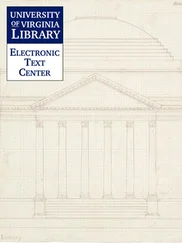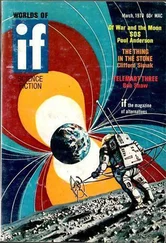“And no one,” I said, “would be insane enough to build a solid ball. It would take too much metal and too much energy to move.”
“You’re sure that it was moved?” asked Orson.
“It had to be,” I told him. “It wasn’t built in this system. No one here could have built it.”
Tyler had pulled a screwdriver out of his toolkit and was poking into the hole with it.
“Wait a minute,” said Orson. “I just thought of something.”
He nudged Tyler to one side, reached down and inserted three fingers into the holes and pulled. The circular section rose smoothly on its hedges.
Wedged into the area beneath the door were objects that looked like the rolls of paper you buy to wrap up Christmas presents. Bigger than rolls of paper, though. Six inches or so across.
I got hold of one of them and that first one was not easy to grip, for they were packed in tightly. But I managed with much puffing and grunting to pull it out. It was heavy and a good four feet in length.
Once we got one out, the other rolls were easier to lift. We pulled out three more and headed for the ship.
But before we left I held the remaining rolls over to one side, to keep them from tilting, while Orson shone his light down into the hole. We had half expected to find a screen or something under the rolls, with the hole extending on down into a cavity that might have been used as living quarters or a workroom. But the hole ended in machined metal. We could see the grooves left by the drill or die that had bored the hole. That hole had just one purpose, to store the rolls we had found inside it.
Back in the ship we had to wait a while for the rolls to pick up some heat before we could handle them. Even so we had to wear gloves when we began to unroll them. Now, seeing them in good light, we realized that they were made up of many sheets rolled up together. The sheets seemed to be made of some sort of extremely thin metal or tough plastic. They were stiff from the cold and we spread them out on our lone table and weighed them down to hold them flat.
On the first sheet were diagrams of some sort, drawings and what might have been specifications written into the diagrams and along the margins. The specifications, of course, meant nothing to us (although later some were puzzled out and mathematicians and chemists were able to figure out some of the formulas and equations).
“Blueprints,” said Tyler. “This whole business was an engineering job.”
“If that’s the case,” said Orson, “those strange things fastened to the structural frames could be mounts to hold engineering instruments.”
“Could be,” said Tyler.
“Maybe the instruments are stored in some other holes like the one where we found the blueprints,” I suggested.
“I don’t think so,” said Tyler. “They would have taken the instruments with them when they left.”
“Why didn’t they take the blueprints, too?”
“The instruments would have been worthwhile to take. They could be used on another job. But the blueprints couldn’t. And there may have been many sets of prints and spec sheets. These we have may be only one of many sets of duplicates. There would have been a set of master prints and those they might have taken with them when they left.”
“What I don’t understand,” I said, “is what they could have been building out here? What kind of construction? And why here? I suppose we could think of Pluto as a massive construction shack, but why exactly here? With all the galaxy to pick from, why this particular spot?”
“You ask too many questions all at once,” Orson told me.
“Let’s look,” said Tyler. “Maybe we’ll find out.”
He peeled the first sheet off the top and let it drop to the floor. It snapped back to the rolled-up position.
The second sheet told us nothing, nor did the third or fourth. Then came the fifth sheet.
“Now, here is something,” said Tyler.
We leaned close to look.
“It’s the solar system,” Orson said.
I counted rapidly. “Nine planets.”
“Where’s the tenth?” asked Orson. “There should be a tenth.”
“Something’s wrong,” said Tyler. “I don’t know what it is.”
I spotted it. “There’s a planet between Mars and Jupiter.”
“That means there is no Pluto shown,” said Orson.
“Of course not,” said Tyler. “Pluto never was a planet.”
“Then this means there once actually was a planet between Mars and Jupiter,” said Orson.
“Not necessarily,” Tyler told him. “It may only mean there was supposed to be.”
“What do you mean?”
“They bungled the job,” said Tyler. “They did a sloppy piece of engineering.”
“You’re insane!” I shouted at him.
“Your blind spot is showing, Howard. According to what we think, perhaps it is insane. According to the theories our physicists have worked out. There is a cloud of dust and gas and the cloud contracts to form a protostar. Our scientists have invoked a pretty set of physical laws to calculate what happens. Physical laws there were automatic—since no one would be mad enough to postulate a gang of cosmic engineers who went about the universe building solar systems.”
“But the tenth planet,” persisted Orson. “There has to be a tenth planet. A big, massive—”
“They messed up the projected fifth planet,” Tyler said. “God knows what else they messed up. Venus, maybe. Venus shouldn’t be the kind of planet it is. It should be another Earth, perhaps a slightly warmer Earth, but not the hellhole it is. And Mars. They loused that up, too. Life started there, but it never had a chance. It hung on and that was all. And Jupiter, Jupiter is a monstrosity—”
“You think the only reason for a planet’s existence is its capability of supporting life?”
“I don’t know, of course. But it should be in the specs. Three planets that could have been life-bearing and of these only one was successful.”
“Then,” said Orson, “there could be a tenth planet. One that wasn’t even planned.”
Tyler rapped his fist against the sheet. “With a gang of clowns like this anything could happen.”
He jerked away the sheet and tossed it to the floor.
“There!” he cried. “Look here.”
We crowded in and looked.
It was a cross section, or appeared to be a cross section, of a planet.
“A central core,” said Tyler. “An atmosphere—”
“Earth?”
“Could be. Could be Mars or Venus.”
The sheet was covered with what could have been spec notations.
“It doesn’t look quite right,” I protested.
“It wouldn’t if it were Mars or Venus. And how sure are you of Earth?”
“Not sure at all,” I said.
He jerked away the sheet to reveal another one.
We puzzled over it.
“Atmospheric profile,” I guessed half-heartedly.
“These are just general specs,” said Tyler. “The details will be in some of the other rolls. We have a lot of them out there.”
I tried to envision it. A construction shack set down in a cloud of dust and gas. Engineers who may have worked for millennia to put together star and planets, to key into them certain factors that still would be at work, billions of years later.
Tyler said they had bungled and perhaps they had. But maybe not with Venus. Maybe Venus had been built to different specifications. Maybe it had been designed to be the way it was. Perhaps, a billion years from now, when humanity might well be gone from Earth, a new life and a new intelligence would rise on Venus.
Maybe not with Venus, maybe with none of the others, either. We could not pretend to know.
Tyler was still going through the sheets.
“Look here,” he was yelling. “Look here—the bunglers—”
Читать дальше












